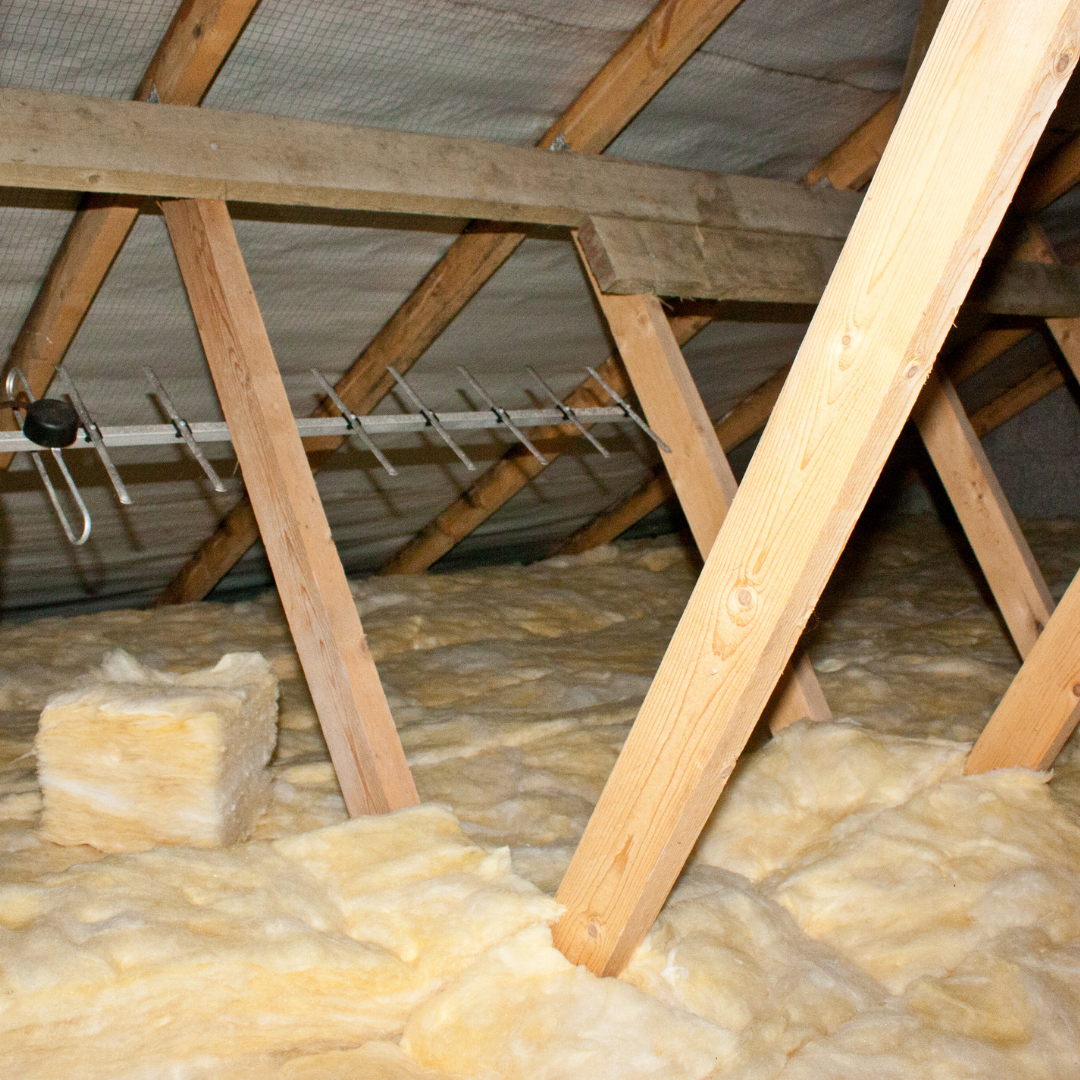If you own a home with an attic, you probably don’t go up there very often. Perhaps you use it for storage, storing boxes of mementos, dusty old furniture, or Christmas decorations that don’t fit anywhere else.
Even if you only walk up into your attic occasionally, it’s difficult to overlook its most significant feature: insulation. And if you notice an odor or a sudden change in temperature in your attic, you might think, “Should I remove my old attic insulation?“
This article can help you if you want to save money on attic insulation removal or you want to perform a home repair project. We’ve put together this comprehensive guide to help you understand why it’s vital to remove old attic insulation and how to do so securely so that you can replace it.
To Improve Heating and Cooling, Replace Old Attic Insulation
The main goal of removing old attic insulation is to make sure that your home is effectively heated and cooled. Attic insulation often degrades with age, losing its ability to efficiently regulate temperatures and insulate your home. Shifting or settling insulating materials, as well as environmental causes such as excessive dampness or damage from direct sunshine, can cause ordinary degradation.
Whatever the reason, the unpleasant truth is that attic insulation does not last forever. Instead, it will need to be removed and replaced at some point in the future in order to maintain proper house temperature regulation.
Other Reasons for Getting Rid of Attic Insulation
There are various other reasons why removing old attic insulation is a smart idea, apart from natural wear and tear or environmental degradation. In these situations, attic insulation removal is not only vital for proper installation but also for your family’s health and safety.
Asbestos
While asbestos is not present in all types of insulation, it is more common in older homes. Before the 1980s, asbestos fiber was widely used in construction due to its resistance to heat, electricity, and corrosion. However, the properties that make it a good insulator also make it harmful and toxic to humans.
Exposure to high levels of asbestos can cause non-cancerous and cancerous diseases, as well as other health issues.
Although the dangers of asbestos are now widely recognized, they were not previously, and the mineral can still be found in older structures and residences. Vermiculite insulation is the most prevalent type of asbestos insulation found in attics, while not all types of this insulation include asbestos. However, it’s always advisable to err on the side of caution and have your older insulation tested for asbestos to be certain of its contents.
Mold
Mold is unfortunately frequent in indoor spaces such as homes. Moldy attic insulation can be caused by a number of circumstances, some of which are more likely to develop (or worsen) with time, such as:
- Climates with high humidity
- Inadequate ventilation
- Heater and air conditioning system leaks
- Storms of epic proportions
If mold has found its way into your attic insulation, it must be removed immediately. The moisture that finally leads to the growth of mold can cause the insulation to deteriorate quickly, rendering it ineffective.
Mold exposure, moreover, can cause a variety of health problems in humans, including mild to severe allergic reactions and long-term upper respiratory problems. If you have contaminated insulation in your crawl space or attic, you should have it removed as soon as possible by an insulation professional.
Rodent & Pest Infestation
Another prevalent threat that may necessitate the removal of attic insulation is rodents. Infestations are more common in older homes since there are more likely to be weak points in the roof or attic exterior.
Pest and animal infestations are a hassle, but they are also a severe concern that can cause extensive damage to your attic and existing insulation. Old attic insulation will almost certainly need to be replaced after such an infestation.
Even if no obvious damage exists, it’s critical to replace any insulation that may contain droppings, as vermin and animals can act as disease vectors.
If you are considering replacing and removing your old attic insulation, you can count on us. We’ve been working with homeowners and helping them with all their attic needs. Our team of specialists can work with you to properly remove your old attic insulation and replace it with effective new insulation.

